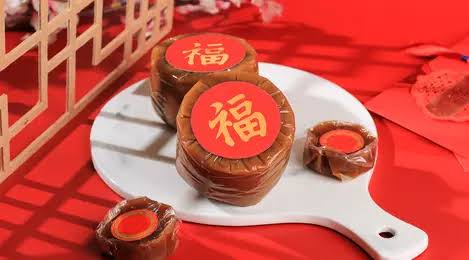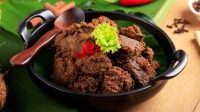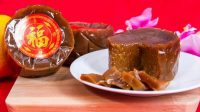KUPASONLINE.COM — ChineseChinese New Year 2023
will be commemorated tomorrow. It turns out that there are 7 obligatory dishes available at the dining table when welcoming Chinese New Year. Anything?
Quoting, the Chinese New YearChinese New Year is not only reflected in the knick-knacks to welcome the Chinese New Year, but also to the dinner table. The Chinese New Year dinner is one of the traditions that is considered important in Chinese society.
The dinner procession is usually held at the residence of the oldest person, or the elders, in a large family. No less important, from the meal program is the arrangement of food served on the table. The mandatory menu includes fish, dumplings and basket cakes.
The food served on the dinner table during Chinese New Year is usually associated with success, progress, happiness and health (longevity). In this case, Chinese society is guided by the phonetic method, which is based on sounds, shapes and symbols and all their associations.
Compulsory Dishes for Chinese New Year:
1. FishFish
Fish menu, for example, in Mandarin fish is called yu. The sound yu here sounds similar to other Chinese vocabulary which means surplus, aka abundance of sustenance.
Some Chinese citizens also choose crucian carp for Chinese New Year. Crucian carp is a type of freshwater fish originating from China, which has been cultivated since the 19th century and has now interbred with Japanese and local carp varieties. The original type, which is plump and shorter, is hard to find in Indonesia. In Chinese, this crucian carp is called jiyu, which is close in sound to the word ji, which means success.
The choice of fish that can be brought to the dinner table is quite a lot. Snapper, shrimp and lobster may also be served on the Chinese New Year table. In general, seafood is recognized as a symbol of prosperity.
There is also a milkfish menu which in Mandarin means liyu. Phonetically, the sound of liyu is close to the word li, which means gift. Eating li on Chinese New Year can be interpreted as a hope that in the new year he will get lots of gifts.
2. Dumplings
In MandarinMandarin, dumplings are called jiaozi, which is associated with wealth. The shape resembles an oblong boat with both ends tilted. In Chinese history, the oval shape of the boat was a medium of exchange for silver. The myth is that the more dumplings you eat on Chinese New Year, the more treasure you can collect.
3. Long noodles
Long noodles are interpreted as a blessing for longevity. It is believed that eating long noodles during Chinese New Year can bring a wish for health and a long life.
4. Spring rolls
In the classical tradition, before eating the spring rolls, the elders at the dinner table would say the words hwung-jin wan-lyang, meaning one ton of gold. This saying is associated with spring roll rolls which when fried glow yellow like gold bars. Eating Chinese New Year spring rolls is a hope to gain wealth.
5. Niang-gao (basket cake)
Phonetic cake in Mandarin can be associated with the word getting taller, aka progress. In the classical view of Chinese society, the more established a person is, the better his social and personal life will be.
6. Mochi cake
In Mandarin, moci cakes are called tāngyuán. The phonemic sound and rounded shape are associated with kinship, family values, harmony and togetherness. So moci cake becomes one of the important snacks on Chinese New Year.
7. Lucky fruit
Lucky fruits are usually tangerines, yellow oranges, and pomelos (grapefruit). Orange yellow is believed to be a symbol of the color gold, and is a hope for prosperity and wealth.
Tangerines and round oranges in Mandarin are called chéng which are associated with luck and charm when speaking or writing. Eating these two kinds of oranges brings hope that their words and writing will dance more, which in the next stage can bring success. There are also pomelo oranges referred to as yo which means prosperity. (*)







